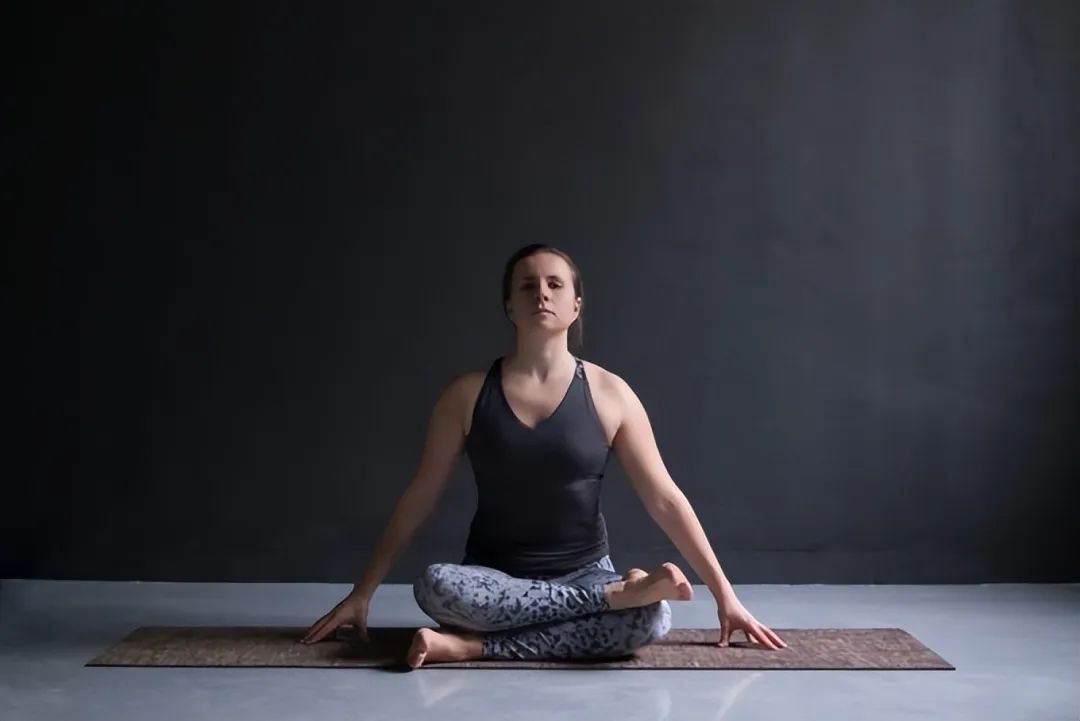The double Dove pose is an advanced yoga pose.

This pose has one heel on the other knee and the other knee on the heel.

Then lean forward from the groin to maintain the extension of the entire spine.

“Agnistambhasana” is the Sanskrit name of this pose.

“Agni” refers to “fire” and “stambha” refers to “pillar” or “wood”.

In the double Dove pose, the legs are like stacked wood.

When practicing, the practitioner will feel the strong stretching of hips and pelvis.

In this pose, the position of the ankle on the other knee is similar to the position of the leg in Dove pose.

Therefore, it is named double Dove.

Tips before practice, spend enough time warming up, especially the hips, psoas and groins.

When folding forward, avoid bending the back and bend from the groin.
Don’t try to push your knees to the floor or bend forward beyond your limits.
If you have an injury to your lower back, hip or ankle, do not practice.
Detailed posture: sit and stand in walking stick style, lift your left knee slightly off the ground, and pull your left heel towards you.
Bend your right leg and place your right foot under your left knee.
Keep your right foot parallel to the edge of the mat.
Place the left heel above the right knee.
Keep your back straight.
Put your hands in front of your legs.
Keep breathing evenly.
When moving your hands forward, make sure you fold forward from the groin for 30-60 seconds.
Tips for beginners if it is difficult to fold one leg on the other, you can simply sit in a simple sitting.
When leaning forward, rotate the thighs outward at the hip joint to help relax the hips.
Modify the folded blanket: if your pelvis tilts back, practice sitting on the folded blanket.
This raises the pelvic area and avoids sagging the back.
Yoga brick: place the Yoga brick between the ankle of the calf and the knee of the thigh.
This does not exert pressure on the hips, and the hips can still be opened.
You can also put another Yoga brick in front of your calf so that the top of your ankle can rest on it.
This prevents ankle injuries and stacks the tibia.
Variant 1: put your hands on the ground variant 2: bend forward further by putting your elbows on the ground.
Put your head on the ground.
Variant 3: twist, in double Dove, twist your torso.
The benefits of this pose stretch the muscles of the hips, knees, and thighs.
Help increase their flexibility.
Make groins, glutes and other muscles stronger.
The lower body actively participates in this pose.
The pressure felt in the lower body can burn excess fat.
Abdominal organs will also be under pressure when maintaining posture.
Thus stimulating the digestive system.
The back stays extended throughout the exercise, which compresses and stretches the entire spine, making it more flexible.
Relieve lower back pain…


